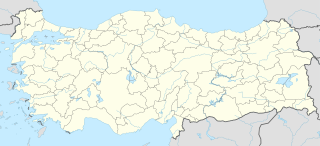 W
WArdanuç is a town and district in Artvin Province in Turkey's Black Sea region of Turkey, 32 km east of Artvin. The name Ardanuç derives from Lazuri language and Armenian.
 W
Whe Georgian Orthodox Church is a major part of Orthodox Christianity in Turkey. Georgian churches in Turkey, namely in Artvin, Ardahan, Kars and Erzrum Province are under jurisdiction of Batumi and Lazeti, Akhaltsikhe and Tao-Klarjeti and Akhalkalaki, Kumurdo and Kars eparchies.
 W
WThe Kingdom of the Iberians was a medieval Georgian monarchy under the Bagrationi dynasty which emerged circa 888 AD, succeeding the Principality of Iberia, in historical region of Tao-Klarjeti, or upper Iberia in north-eastern Turkey as well parts of modern southwestern Georgia, that stretched from the Iberian gates in the south and to the Lesser Caucasus in the north.
 W
WThe Klarjeti was a province of ancient and medieval Georgia, which is now part of the Turkey's Artvin Province. Klarjeti, the neighboring province of Tao and several other smaller districts constituted a larger region with shared history and culture conventionally known as Tao-Klarjeti.
 W
WQ'ueli or Q'uelis-tsikhe was a medieval Georgian fortress atop the homonymous mountain of the Arsiani Range, now within the boundaries of Turkey, where it is known as Kol Kalesi or Kuvel Kalesi. Its Georgian name is alternatively transliterated as Qveli, Kveli, K'veli, Qvelis-ts'ikhe or Qvelis-c'ixe. First appearing in the early 10th-century Georgian sources, Q'ueli was one of the principal fortifications of the province of Samtskhe until being conquered by the Ottoman Empire in the 16th century.
 W
WThe Rebellion of Bardas Phokas the Younger was a major Byzantine civil war fought mostly in Asia Minor. During the second half of the tenth century the Byzantine Empire was characterized by emperors either devoted to or forced into long periods of campaigning mostly in the Middle East, Crete, Cyprus, Antioch; many other territories were also conquered during this period. The success Byzantium experienced during this period was largely thanks to the Phokas clan, an aristocratic family who consistently produced competent generals, and their relatives. Indeed, during the reigns of Nikephoros II Phokas and his nephew John I Tzimiskes, these aristocratic generals supplanted the legitimate heirs of the Macedonian dynasty, the adolescent brothers Basil II and Constantine VIII, as the true rulers of the empire. When Tzimiskes died in 976 Basil II ascended to power. Quickly, however, tensions began to flare up within the royal court itself as the purple-born emperor attempted to reign fully out of the influence of the established court eunuchs. The figureheads behind the simmering tensions in the capital would come to blows in a major rebellion lead by Bardas Phokas the Younger, the most powerful man left of the old Phokas regime.
 W
WTao is a historical Georgian district and part of historic Tao-Klarjeti region, today part of the Eastern Anatolia region of Turkey. Its name derives from the ancient proto-Georgian inhabitants of this area, known as Taochi.